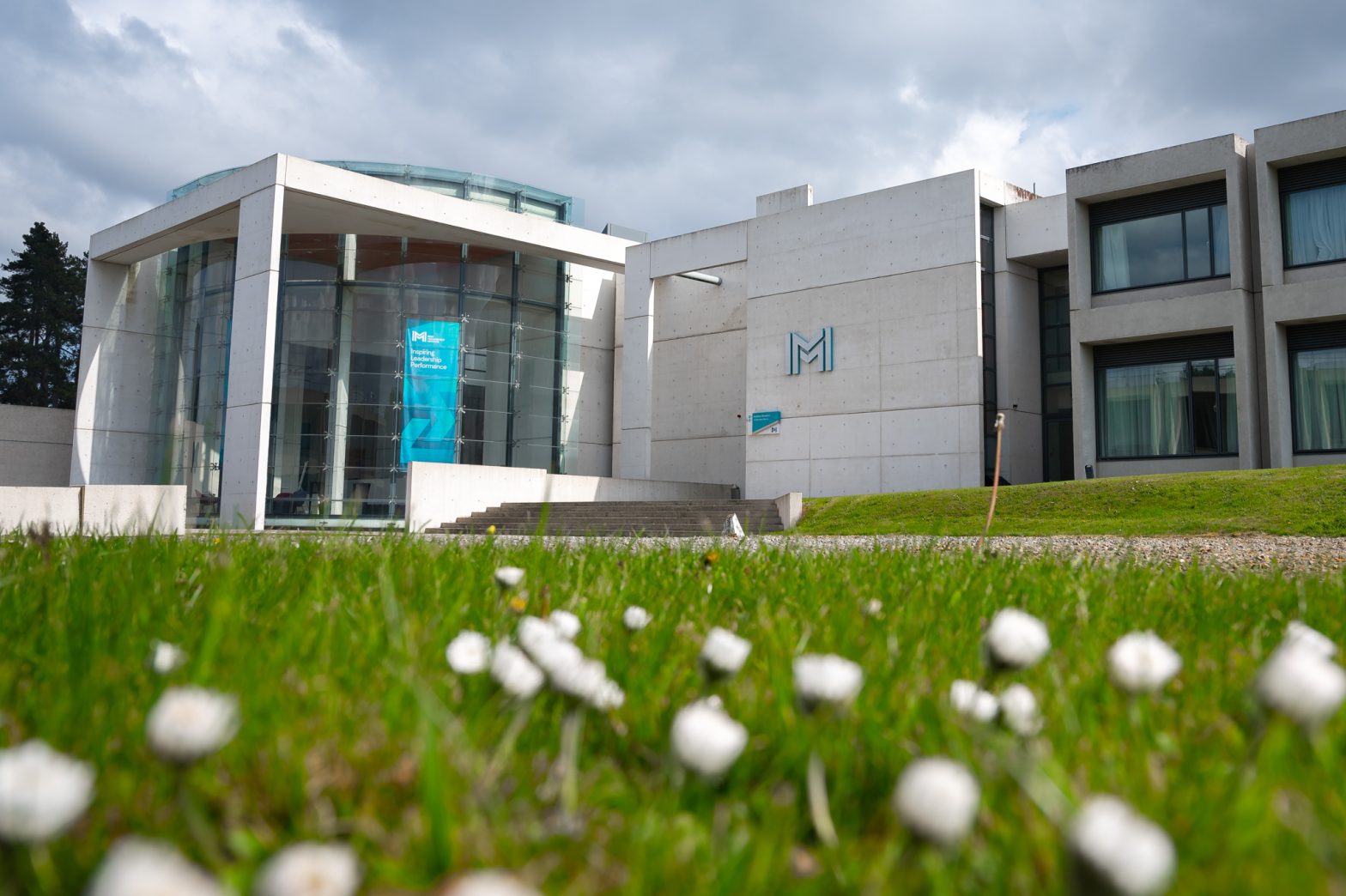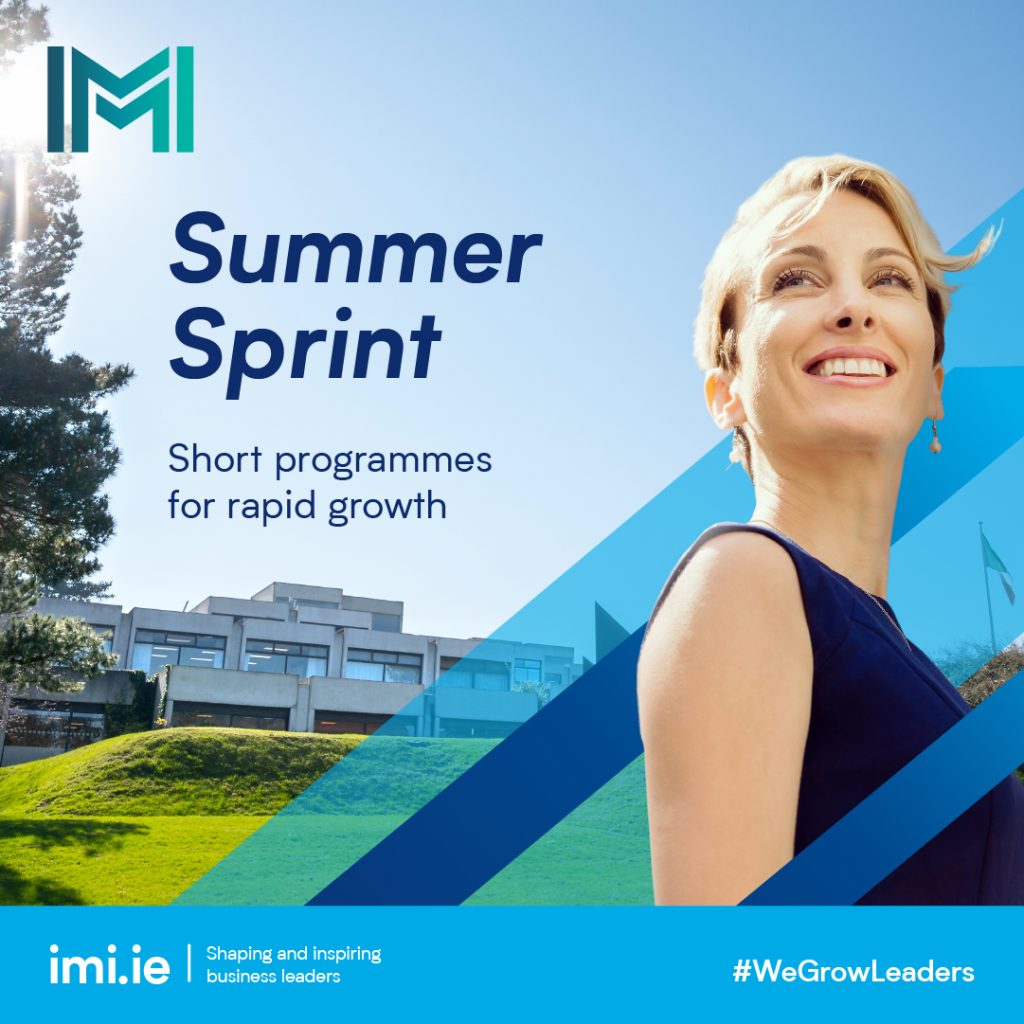Embracing Sustainable Change and Transformation: A New Era in Organisational Development
By Laurence Knell | 25th November 2024
Why is embedding sustainable change so important? How does sustainable change differ from traditional change management approaches? How can leaders get buy-in from employees and stakeholders? And what are the risks of not implementing change in a sustainable way?
In this article, Laurence Knell – Programme Director for IMI’s Professional Diploma in Sustainable Change & Transformation – discusses all this and more.
Moving Beyond Traditional Change Management
Change management approaches have traditionally involved a rigid, step-by-step and often formulaic process. While having steps and a process is crucial, this linear perspective can be misleading. If nothing else, it suggests that once you have completed the prescribed steps in order and from start to finish, the change is complete and you can move on to something more important. Yet, this is simply not how change happens in reality.
Traditional change management approaches have often reduced change to a functional perspective and ignored the constant flux and fluidity of the business environment. By contrast, the concept of sustainable change acknowledges that as you progress through a change process, unexpected events will occur and challenges will inevitably arise. Key to success is considering both the impact and the duration of the change, and fully understanding the underlying context in which it is taking place. Sustainable change in this regard is not just about making a temporary shift; it is about transforming an organisation or its activities in a way that has a lasting, positive impact on all involved. It is about ensuring that the desired transformation endures.
Real-World Examples of Sustainable Change
Some recent real-world examples can help us understand the importance and longer-term impact of sustainable change.
Under CEO, Satya Nadella, Microsoft has undergone a significant transformation involving a fundamental shift in how the company operates. As part of a cultural renewal programme, Microsoft have drawn on insights from the American psychologist Carol Dweck and embraced a growth mindset perspective. For Microsoft, this is not just about good employer branding or another HR initiative; rather, it has formed part of a broader cultural change driven by the leadership who have emphasised the need to change how Microsoft employees work together, engage with customers and approach their roles. Crucially, this type of cultural transformation is often the hardest change to achieve as it alters the very fabric of an organisation’s DNA.
Closer to home, Ryanair provides another example. Over the years, the airline has continuously transformed its business model, evolving from a small regional carrier into one of the world’s largest and most successful airlines. Yet unlike Microsoft’s cultural shift, Ryanair’s transformation is not due one single change but multiple iterative and incremental changes over a period of years, each requiring significant time and effort. This ongoing process has copper-fastened Ryanair’s leading role in the aviation sector and demonstrates how sustainable transformation and competitive advantage can be achieved through relentless hard work and adaptation.
Balancing Technology and Long-Term Impact
The ongoing process of change, adaptation and, ultimately, transformation faced by organisations today is best exemplified by the impact of the COVID-19 pandemic. The pandemic highlighted how quickly businesses must adapt to new environments when faced with a ‘burning platform’. This included the sudden need for digital transformation imposed on many companies and organisations in an effort to maintain business as usual. To handle such significant, systemic changes successfully, leaders needed to keep a sharp focus on both their direction and purpose. This in turn helped them to work toward their long-term goals despite relentless, short-term disruptions that we all experienced during the pandemic.
Leadership is critical to this process. Whether it’s the CEO, managing director or other members of the leadership team, the ability to define and maintain the organisation’s purpose is vital. This involves spelling out the purpose, ensuring clarity and focus, and maintaining that focus amidst changing circumstances. Equally, leaders must ensure that their organisations are “change ready” and that their people are equipped with the skills and the mindset to respond to and evolve with dynamic contexts.
Overcoming Barriers to Agility and Innovation
A key component of this is the fostering of a culture of agility and innovation. Leaders must possess the skills and capabilities to drive the organisation towards its goals, while also supporting, crafting and nurturing the desired culture. Leaders must pay attention to culture, which takes time to develop and cannot be shifted on overnight. As the old Peter Drucker line goes, “culture eats strategy for breakfast”.
What is often forgotten is that there inherent links between strategy (where we are going), innovation (how we will get there) and change (how we will do it). These elements, often seen as distinct, are deeply interconnected. A groundbreaking new strategy necessitates innovative approaches and new ways of doing things, which will in turn lead to significant change. Recognising these links and not overlooking the basic element of culture is vital to ensuring sustainable transformation.
The Importance of ESG in Modern Business
The importance of contextual factors in the implementation of change and transformation is often neglected. This relates both to the potential impact of those factors on the organisation and its proposed change programme, as much to the impact of those changes on the context in which the organisation is operating. It is consequently vital that leaders are mindful of Environmental, Social, and Governance (ESG) factors when implementing change.
The focus on ESG emphasises new forms of value beyond simply financial return, most particularly stakeholder value and social impact.
Good governance is essential for all types of organisations, whether a merchant bank, charity, government department or airline. Understanding and addressing the social and environmental impacts of business activities is key. This includes recognising the environmental impacts of producing products or services and ensuring these are properly managed. Sustainable change requires taking ESG factors into account to ensure that they are comprehensively addressed.
Organisations must act ethically, respecting the societies and communities in which they operate. This ethical approach is a crucial component of how organisations go about their business, but also plays a key role in engaging, empowering and attracting people to work for them. Confirming what we all recognise intuitively, research by Georg Wernicke at HEC Paris amongst others has shown that few people want to work for an employer or organisation that they are ashamed of.
Tools and Frameworks for Sustainable Change
While traditional models of change models still have their place, recent times have the seen the emergence of iterative models based on learning and adaptation, and a deep understand of impact. When making changes, it is important to learn from what has happened and understand how these changes will affect the organisation into the future.
This draws upon a new appreciation for evaluating value—not just in financial terms but also in terms of purpose. What is the organisation delivering for stakeholders and customers? How does this link to the organisation’s purpose and values?
Consequently, involving stakeholders in the change process is crucial. This can include co-creation, where stakeholders are part of developing new products and services, which can in turn ensure that changes are sustainable and have lasting benefits. It also further highlights the link between strategy, innovation and change, and models of innovation, such as biomimicry and frugal innovation, potentially offer new ways to develop sustainable solutions.
Ensuring Buy-In and Engagement
Involving stakeholders in the change process can also help to ensure both buy-in and engagement, which in turn will enhance longer-term sustainability . This entails moving from a traditional, paternalistic approach to something that is more inclusive: employees and stakeholders need to understand and be part of the organisation’s purpose. If done successfully, stakeholders can become not just supporters but also advocates of the change process. Underpinning this is the recognition that social networks and inclusive communication strategies can both support and sustain change. Research by Damon Centola at the University of Pennsylvania has demonstrated how change spreads through networks and how these networks can be used to significantly drive and communicate change.
Just as importantly, moving away from a paternalistic “do what I’m telling you to do” approach to something more inclusive aligns with the ESG concept and the importance of making change sustainable. Engaging people in the process ensures that change is embraced and sustained, while also minimising resistance.
Risks and Mitigation in Sustainable Change Management
A failure to engage effectively with stakeholders and to draw upon ESG considerations can lead to significant risks for any change or transformation efforts. Change might happen; but it is likely to be short-term, superficial and lack buy-in from the organisation’s members. Quick wins are important but they must align with the organisation’s long-term purpose, otherwise they risk becoming a distraction. Leaders must maintain clarity on their direction and purpose to ensure sustainable change.
To mitigate these risks, it is crucial to maintain a clear purpose and direction. Ensuring that every change aligns with the organisation’s core values and long-term goals is essential for sustainable transformation. This involves consistent effort and a commitment to embedding these values into every aspect of the organisation’s operations. It also requires ongoing two-way communication between and organisation’s leaders and its stakeholders.
Conclusion
Sustainable change acknowledges the complexity and constant evolution of our world, ensuring transformations are not only effective in the short-term but also resilient and lasting. Creating this lasting changes requires tools and methodologies that foster a culture of continuous improvement, innovation and strategic alignment. It emphasises the importance of leadership, stakeholder engagement and a strong organisational purpose, with leaders ensuring their actions are ethical, responsible, and have a positive social and environmental impact.
The journey towards sustainable change and transformation is ongoing and requires a commitment to clarity, purpose and long-term goals. By adopting an inclusive approach and leveraging the interconnectedness of strategy, innovation and change, leaders can achieve sustainable growth and lasting success. This holistic perspective ensures that changes are deeply rooted in the organisation’s values and culture, paving the way for a thriving future.
Lead and manage change more effectively, and ensure your organisation’s change efforts deliver in the future with IMI’s Professional Diploma in Sustainable Change and Transformation. Now enrolling for Spring: https://www.imi.ie/product/professional-diploma-in-sustainable-change-and-transformation/



